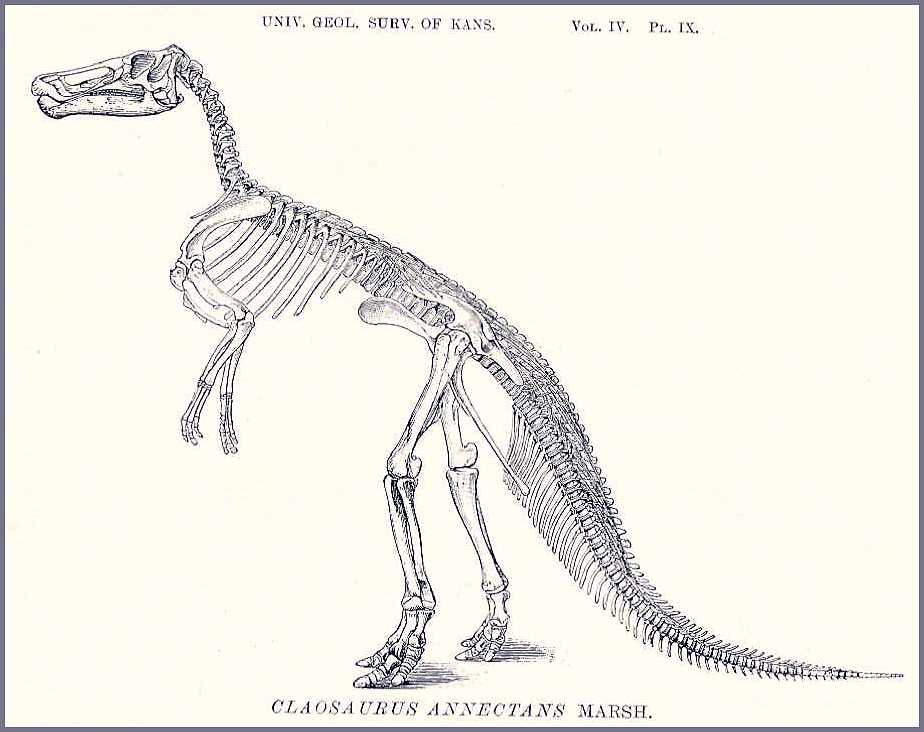Marsh 1872 Dinosaur (original) (raw)
Wherein, O. C. Marsh recounts the discovery of the remains of a dinosaur from the chalk of western Kansas. According the Carpenter, et al. (1995), these remains were found by Marsh about four miles east of present day Russell Springs, Kansas, on the north side of the Smoky Hill River. Marsh later (1890) changed the genus name to Claosaurus("broken lizard") when major differences between it and _Hadrosaurus_became apparent. The remains found in Kansas indicated a 12 to 15 foot long animal.
Carpenter, K., D. Dilkes, and D.B. Weishampel, 1995. The dinosaurs of the Niobrara Chalk Formation (upper Cretaceous, Kansas), Jour. Vert. Paleon. 15(2):275-297.
Everhart, M.J. and Hamm, S.A. 2005. A new nodosaur specimen (Dinosauria: Nodosauridae) from the Smoky Hill Chalk (Upper Cretaceous) of western Kansas. Kansas Academy of Science, Transactions 108(1/2), p. 15-21.
Liggett, G.A. 2005. A review of the dinosaurs from Kansas. Kansas Academy of Science, Transactions 108(1/2), p. 1-14.
Marsh, O.C. 1890. Additional characters of the Ceratopsidae, with notice of new Cretaceous dinosaurs. American Journal of Science, Series 3, 39, p. 418-426, with pls. v-vii.
Williston, S. W., 1898. Dinosaurs. The University Geological Survey of Kansas, Part III, 4:67-70, pl. 9.
The picture below shows a related species of hadrosaur discovered by O. C. Marsh in Wyoming. Earl Manning notes (pers. comm, May, 2003) that "Hadrosaurus"annectens is now considered to be a primitive hadrosaurine called Edmontosaurus.

